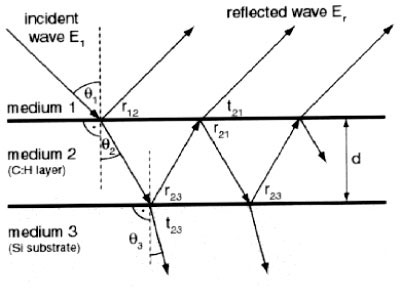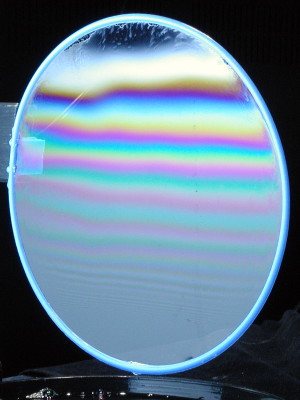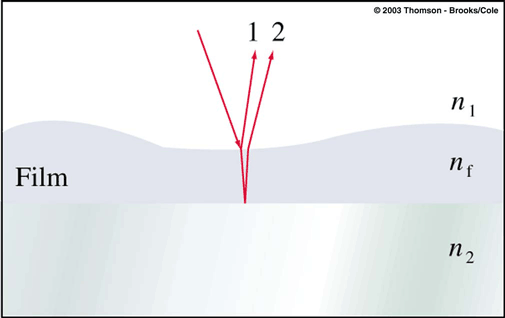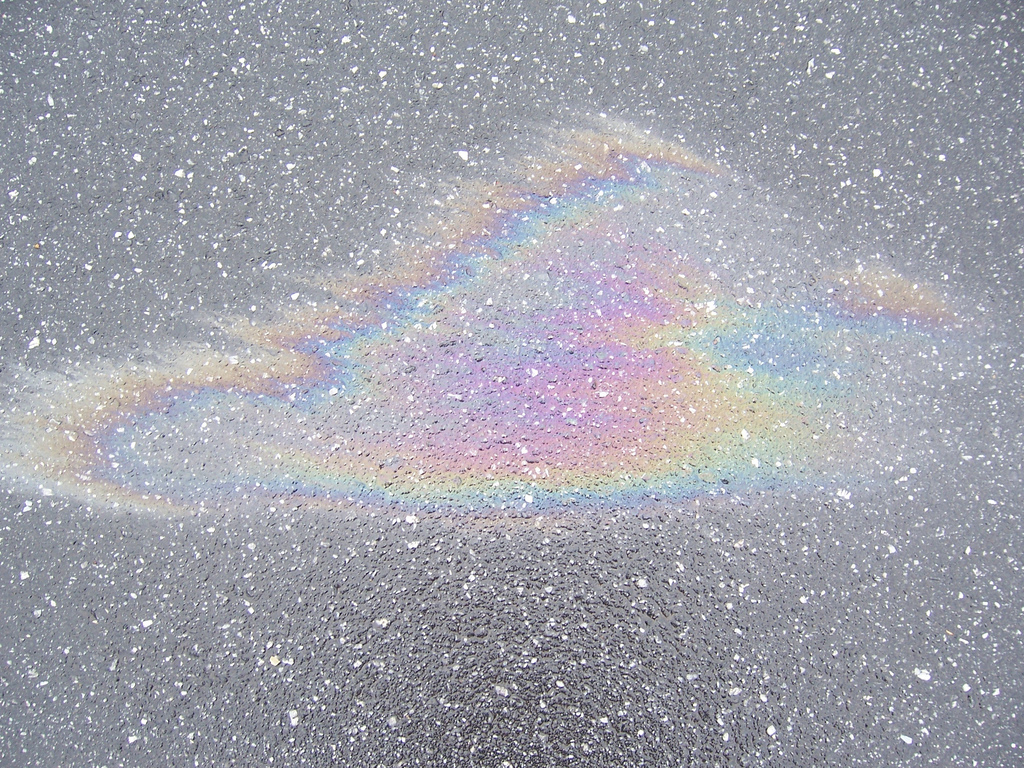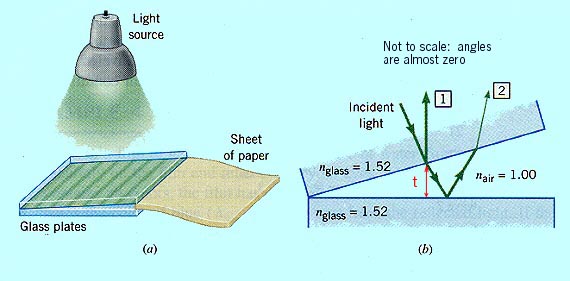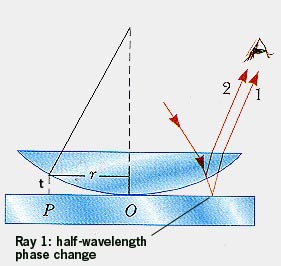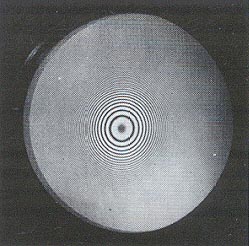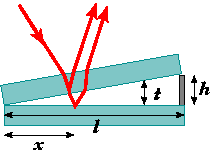
- Use the formulas above
- Air between glass panels, n1 > n2 < n3 :
- Glass wedge illuminated from above, n1 < n2 > n3 :
- Dark fringes where t = x h /l = ½ m λ , hence at x = ½ m ( l λ / h)
- The end point, x = 0 is dark
- Think about setup to make the end point bright
- Measuring distance between fringes one can determine the wavelength &lambda of light
